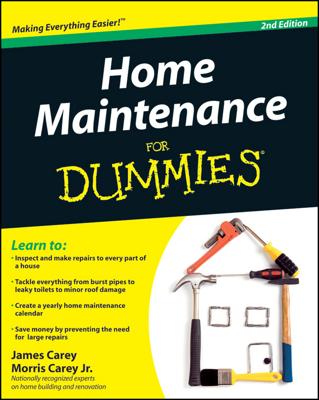-
Baking soda: This is sodium bicarbonate, an alkaline substance produced naturally in mineral springs. Its mild abrasive and foaming action is a gentle but effective favorite.
-
White vinegar: The acetic acid in vinegar gives it a tart taste — and great cleaning properties! The vinegar in the following recipes is distilled white household vinegar with a standard 5 percent acidity. For tough jobs, you can increase its acidity (and cleaning power) by boiling off some of the water content. Just remember: Higher acidity requires more careful handling.
-
Lemon juice: Next to vinegar, lemons are the hands-down favorite for all-around cleaning and freshening. The secret ingredient of this wonder fruit is ascorbic acid. By comparison, vinegar is inexpensive and has a sharp odor, while lemons cost a bit more and smell a heck of a lot better.
-
Salt: Its mild abrasive and absorbent action makes it a cleaning natural.
Even though these homemade cleaning solutions are made with natural products, they still contain mild acids that can sting and burn eyes and skin. Always wear rubber gloves, protect your eyes with goggles, and have plenty of ventilation when using any type of cleaner, whether store-bought or homemade.
All-purpose, handy dandy cleaner
You can use this solution to clean and freshen just about any surface. It works especially well for day-to-day cleaning of range tops and cooktops. Mix up the following ingredients:-
1 teaspoon borax
-
1⁄2 teaspoon washing soda
-
2 teaspoons white vinegar
-
1⁄4 teaspoon dishwashing liquid
-
2 cups hot water
D-I-Y cleanser scrub
This cleaning formula is especially well suited for cleaning baked-on spills on glass or porcelain ranges and cooktops when you would normally pull out the cleanser. Start with the following ingredients:-
3⁄4 cup borax
-
1⁄4 cup baking soda
-
Dishwashing liquid to moisten
Gentle glass cleaner
The following solution works well for cleaning the glass shelving in your refrigerator, glass cooktops, and the windows in range and oven doors. You need the following materials:-
2 tablespoons ammonia
-
1⁄4 teaspoon dishwashing liquid
-
1⁄2 cup rubbing alcohol
-
Hot water
For super-duper window cleaning — especially in cold weather — add 1 teaspoon of cornstarch to the formula.
People-friendly oven cleaner
The following is a safe alternative to conventional caustic oven cleaners. It's also great for cleaning barbecue grills and grungy pots and pans.-
2 teaspoons borax or baking soda
-
2 tablespoons dishwashing liquid
-
1-1⁄4 cups ammonia
-
1-1⁄2 cups hot water
Super-duper disinfectant
This solution works well anywhere you would use a store-bought disinfectant, such as appliance pulls and handles and the inside face of the refrigerator where the gasket seats. Mix the following ingredients and then scrub:-
1 tablespoon borax or baking soda
-
1⁄4 cup powdered laundry detergent
-
1⁄4 cup pine-oil-based cleaner or pine oil
-
3⁄4 cup hot water
Easy mildew remover
This mildew formula works great on painted and other washable surfaces. Wear gloves and eye protection and have plenty of ventilation when working with this solution:-
1⁄3 cup powdered laundry detergent
-
1 quart household liquid chlorine bleach
-
3 quarts warm water

